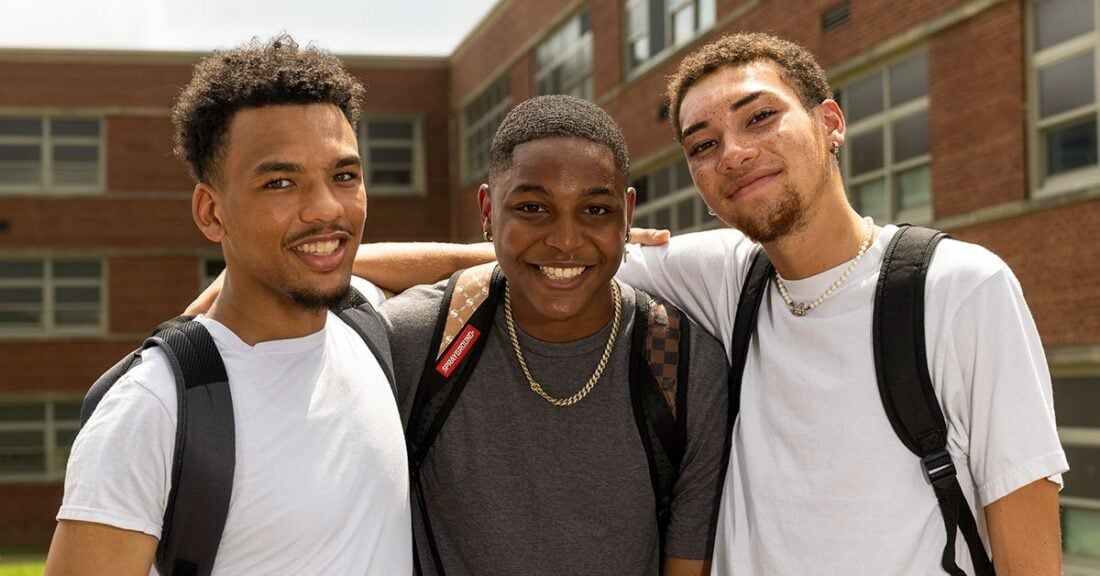Creating a Sense of Belonging
Young People Identify Ways to Build Welcoming Environments

Credit: Wide Angle Youth Media for the Casey Foundation
All young people should feel like they belong — that they are welcome and recognized as human beings with strengths, potential and aspirations. Yet, this isn’t a given for young people of color, whose culture, history and accomplishments are often absent or unrecognized by the people and places shaping their everyday lives.
This post explores what it would look like to advance racial equity in ways that would create places to live, work and play where every young person feels both welcome and included.
Belonging Research
Culture, belonging and inclusion can directly affect outcomes for young people, research indicates. Inspired by the work of scholar john a. powell and the Othering & Belonging Institute at UC Berkeley, the Annie E. Casey Foundation brought young people of color together with elders, thought leaders and youth movement organizers to define what it takes to create a truly inclusive environment for young people.
“We learned that creating belonging doesn’t just happen,” says Leslie Boissiere, the Foundation’s vice president of External Affairs. “It requires carefully considering the experiences that young people have and recognizing the unique value of these experiences. It’s also about ensuring that young people see themselves reflected in a place or a situation and actively listening to what they have to say to continually reinforce that they matter and that this environment is designed to support them and help them thrive.”
A leading scholar on race equity and the director of the Othering & Belonging Institute, powell has described the root of racial, ethnic and religious conflict exploding across the globe as a problem of “othering.” He defines othering as entrenched systems of thought and behavior that underpin pervasive and perpetual disparities. To counter these tactics, powell writes, we must identify and advocate for inclusive places and new narratives that promote belonging.
Such moves are critical for healthy development, according to research. Young people are adaptable to learning and innovation, but the effects of toxic exposures — including structural racism and discrimination — can cause lasting harm to confidence and positive identity development. The interplay between biology and the environment makes it imperative that the systems responsible for guiding young people into adulthood send an unequivocally supportive message.
Key Components of Belonging
The partners that the Foundation brought together identified seven concrete ways to let young people know they belong:
- Making first impressions meaningful. When young people enter a place or a situation, they should be actively greeted with ceremonies and words that both acknowledge them and engage them fully and authentically.
- Being seen. Indigenous youth told the Foundation that they feel invisible and want to be seen for who they are. Black youth felt seen—but in a negative way—and expressed a desire for this to change.
- Being affirmed. Young people of color have their identities affirmed when they learn about the contributions, power and resiliency of their people.
- Valuing culture. Culture helps Black and indigenous youth see themselves in a positive, racism-free frame.
- Being heard. Young people need time and attention paid to their stories, questions, ideas and ways of expressing themselves. What they have to say is of value.
- Having a sense of agency. Feeling able to control your individual trajectory and create change in your environment is deeply connected to positive youth development.
- Focusing on well-being. Organizations and institutions should hold themselves accountable by tracking well-being measures in belonging, thriving and flourishing. Assessments should capture data on a young person’s connection to land, nature, community and culture.
More Resources on Belonging
Read an overview of what belonging looks like
Watch the Othering & Belonging Institute’s video on building an inclusive society
View the Foundation’s resources for advancing racial equity






